Introduction to Golestan Palace
Golestan Palace is a set of historical monuments that has faced many events throughout its history. It is the only site in Tehran that is registered under UNESCO World Heritage. It is a place where Qajar and Pahlavi kings were coronated. Golestan Palace is 4.5 acres, which is 1/3 of its original size.
History of Golestan Palace
This complex is more than 400 years old. Although it wasn’t as it is today and was much simpler. Later on, when Tehran was selected as the capital during the reign of the Qajars, this building turned into what it is now. The Golestan Palace complex consists of 12 palaces.
Architecture
Each part of this place was built during the reign of different kings. It created a mix of different Iranian styles. Later on, when Naser-al Din Shah traveled to Europe, some aspects of non-Iranian architecture and decorations were added to this complex. Interior decorations of mansions include Qajar and Pahlavi decorations. Thanks to Naser-al Din Shah, it has a combination of Iranian and European neoclassical architecture.
Golestan Palace in detail
The Marble Throne Room
It is the oldest building in the complex and dates back to 1760. It is the place where the Qajar Kings would have a royal audience known as Salam. During the Salam, people would come to the palace to have an audience with the king. The last king who held this audience was Reza Shah, the founder of the Pahlavi dynasty. In 1806, the famous marble throne was built and placed there. The yellow marble used for this throne is from the marble quarries of Yazd.

Khalvat-e Karim Khani
This part of the complex dates back to the 1760s and was built by order of Karim Khan, the king of the Zand dynasty. Originally, it was connected to the marble throne and the harem, but later on, the entrance to these parts was blocked. The most notable thing to see here is the tombstone of Naser-Al din Shah, which is made of marble. This tombstone was transferred from its original place in the Shah Abdol Azim shrine to this place after the revolution of 1979.
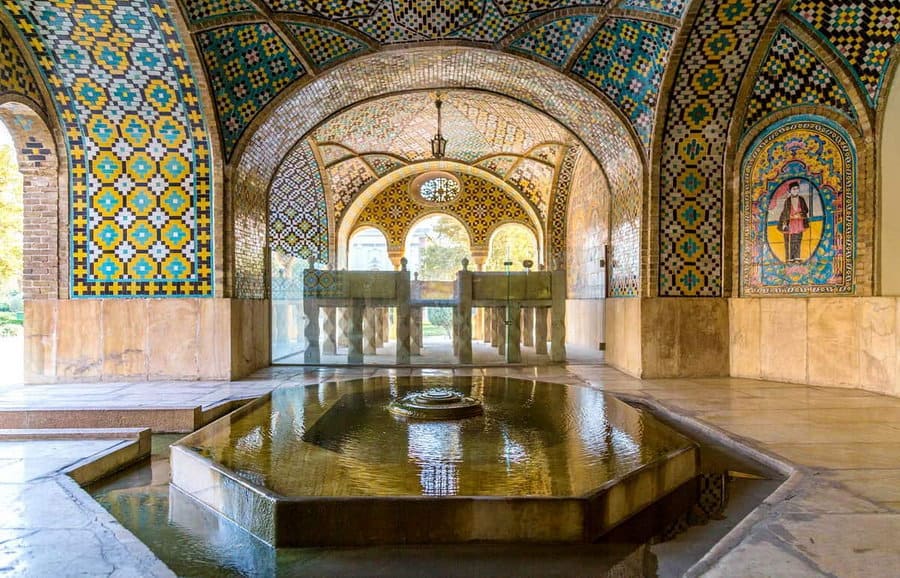
Main Palace (Salam, Aj, and Royal dishes halls)
This palace is located in the northern part of the complex and consists of Salam Hall, Mirror Hall, Aj Hall, and the Royal Dishes Hall.
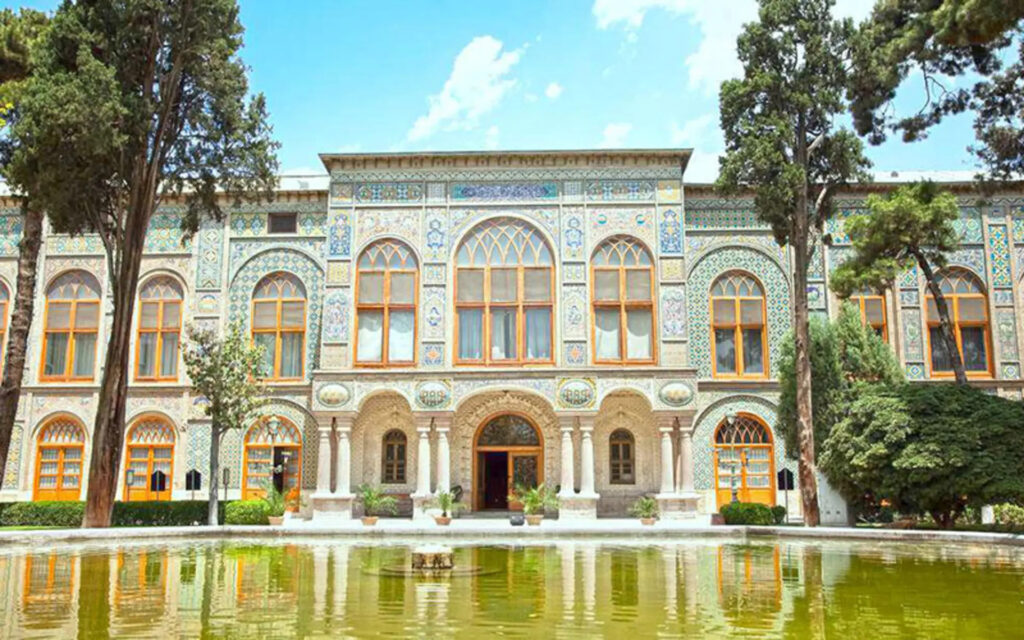
Salam Hall
This museum was built in the 1870s after Naser-Al din Shah traveled to Europe for the first time. In his journey he visited the European museums and wanted to have something similar. Many gifts from European royalties to Qajar kings are kept here. The most notable ones are gifts from Queen Victoria of England. Later on, this place was used for some special ceremonies. In 1967, Mohammad Reza Pahlavi was coronated in this hall as well.
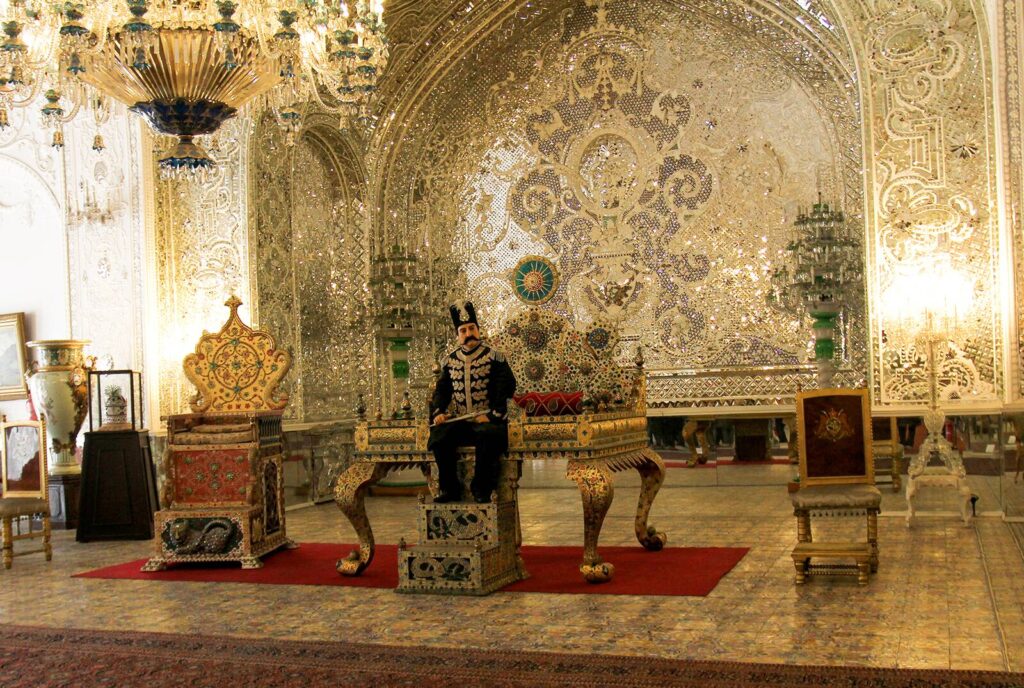
AJ Hall
This hall was constructed during the second half of the 19th century. This hall was an extension to the royal museums. After the renovations of 1967, this place was used during the special royal ceremonies. Inside are some paintings from different Qajar kings. Besides these, there are two elephant ivory gifts from India and two tapestries from France, the dance of Nymph and a Satyr and the coronation of Venus.
Royal Dishes Hall
This hall is the last extension of the museum, which was constructed in 1965. The gifts in this hall, which are from European monarchs, were transferred from the Salam Hall to this place.
Among the dishes placed in this museum are the Chinaware related to Napoleon Bonaparte’s wars, the Chinaware by Nicholas I, the Russian Emperor, the jeweled set gifted by Queen Victoria, the set made of the precious malachite stone gifted by Alexander III, and the Chinaware gifted by Wilhelm, emperor of Germany, to the then Crown Prince of Iran.
Shams-ol Emare (the house of the Sun)
Naser-al Din Shah was arguably the most important Qajar king. In the second half of the 19th century, on his journey to Europe, he saw tall buildings and skyscrapers there and wanted to have a similar building in Tehran. So, after returning to Iran, he ordered the construction of this building. This building has 5 floors and is 35 meters tall, which made it the tallest building in Tehran.
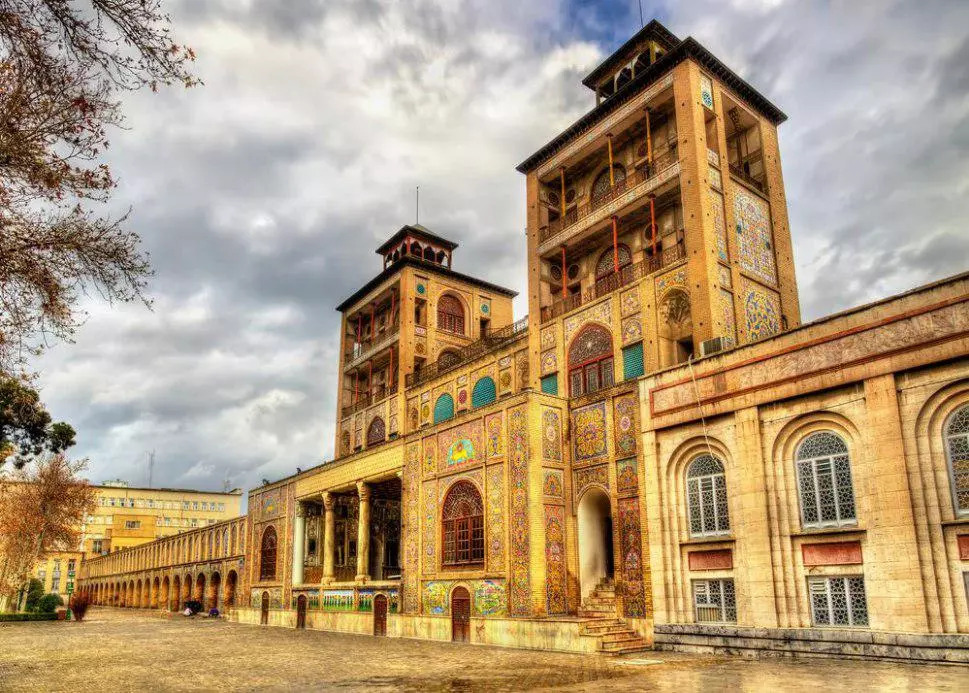
Wind Tower Mansion
This mansion is located in the southern part of the Golestan complex. Its decoration consists of wall and ceiling paintings, mirror work, stucco, and marble, which makes it one of the most beautiful parts of the Golestan Palace complex.
There are two wind towers connected to this mansion. The wind towers work as ventilators and cool down this mansion. Mozafar-Al Din Shah, the fifth Qajar king, was coronated in the mansion.
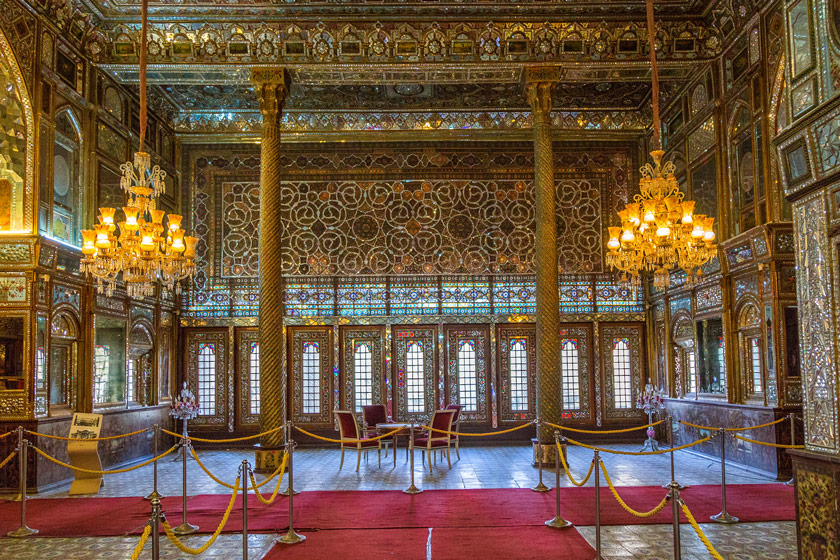
Ethnology (Abyaz) Museum
This museum is located in the southern part of Golestan Palace and was constructed in the late 19th century. This place was built to keep the gifts from Sultan Abdol Hamid, the Ottoman king. It is said that Nasser al-Din Shah himself drew the plan of the new palace and set the dimensions of its great hall according to the width and length of the Sultan’s largest carpet.
From the very beginning of its construction, the Abyaz Palace was designated as the place of work for the prime minister. Later on, the prime ministers of subsequent governments also established their headquarters in this palace, and the meetings of the cabinet were also held here.
In the 1950s, this palace was placed at the disposal of the country’s fine arts institute, and some repairs and renovations were done here. From this time onwards, this palace was used as a location for temporary exhibitions, and a center for the activities of the General Directorate of Museums and Popular Culture was designated.
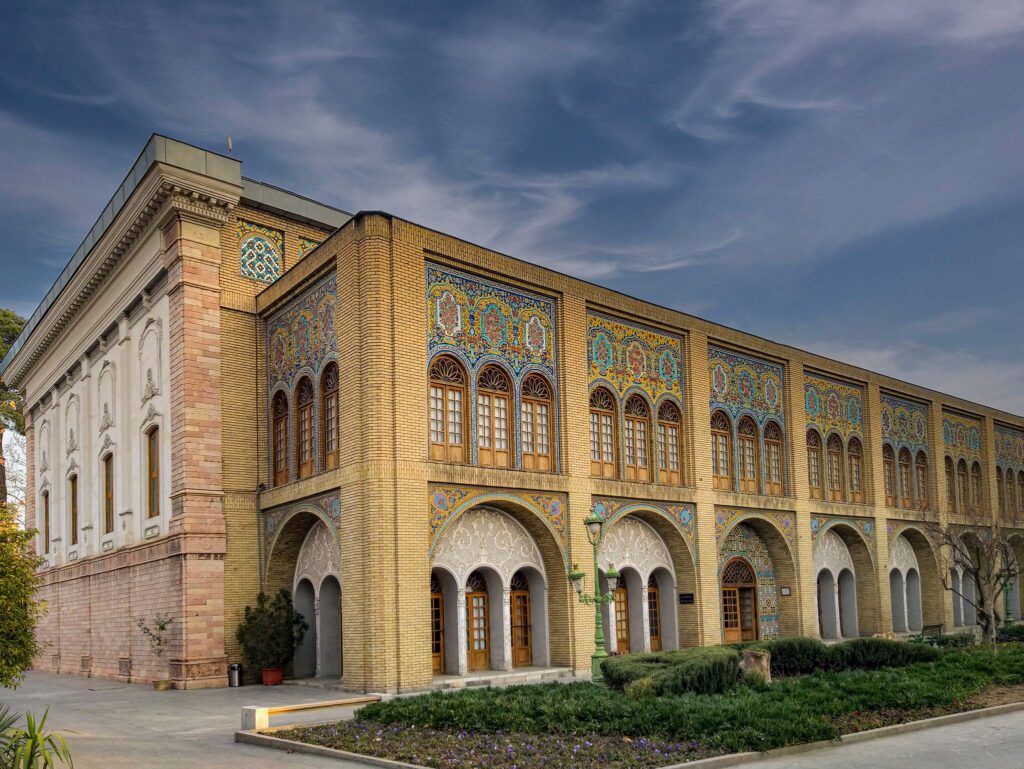
How to go to the Golestan Palace complex?
You can easily reach the Golestan Palace complex through the subway system. All you have to do is go to the 15th of Khordad station. Through there you can visit the Golestan Palace complex as well as the Grand Bazaar of Tehran.






